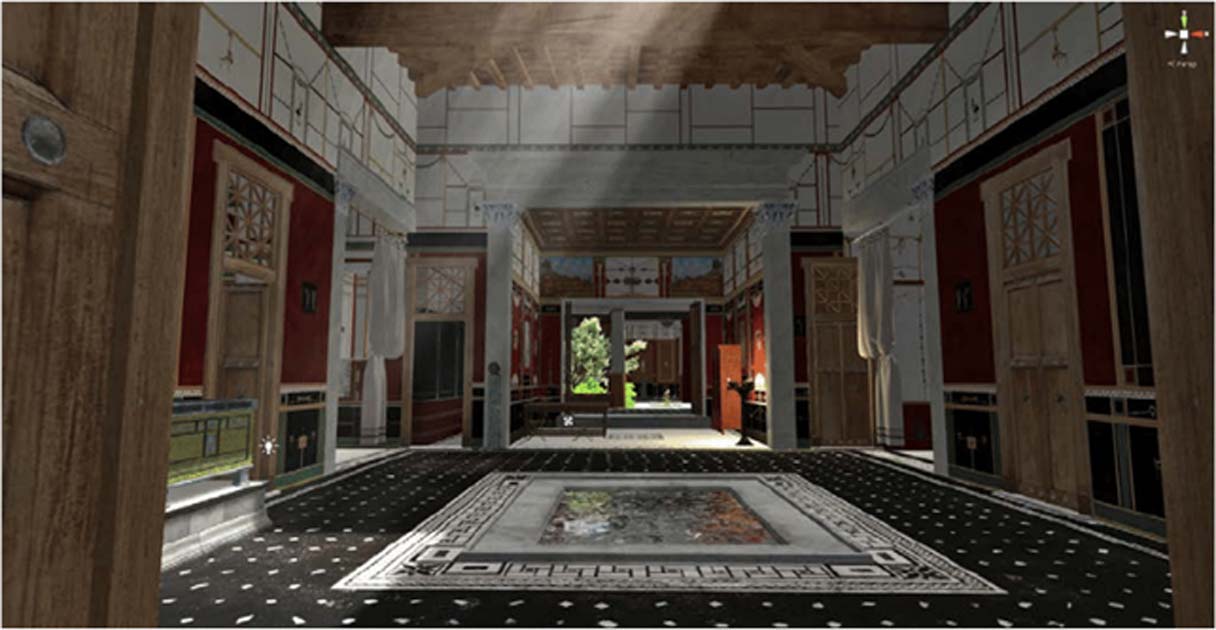Magnificent 3D Reconstruction of Pompeii Home Sheds Light on Life in the Ancient City Before its Destruction
Pompeii was an ancient Roman city near modern-day Naples in Italy, which was wiped out and buried under 6 meters of ash and pumice following the eruption of Mount Vesuvius in 79 AD. It is an eerie feeling to walk the empty streets of Pompeii and to view shops and homes left virtually untouched for nearly two millennia. One home still contains a complete loaf of bread sitting in the oven, perfectly preserved by a coating of ash. Now everyone has the opportunity to walk the streets and peer inside homes thanks to a detailed 3D digital reconstruction of an entire Pompeian city-block.
The impressive initiative is part of the Swedish Pompeii Project, which began in 2000 at the Swedish Institute in Rome, and sheds light on the lives of the people who lived and died in the ancient Roman city in the first century AD. It is now overseen by researchers at Sweden's Lund University. The researchers virtually reconstructed an entire block, including a magnificent house that belonged to a banker called Caecilius Iucundus. The home was designed to allow as much light as possible to shine into the rooms, especially in the most elaborate room known as the tabularium (city archive).
The city block that was reconstructed, called Insula VI, includes two large and wealthy estates, in addition to the house of the banker. There is also a bakery, tavern, laundry, and a garden with fountains.

An overhead view of Insula VI, the city block that was reconstructed. Credit: Swedish Pompeii Project
The well preserved mosaic floor pieces and fully intact windows made of translucent gypsum enabled archaeologists to piece together what the home would have looked like nearly 2,000 years ago.
Archeologists also studied the water and sewer systems and discovered important information about the social hierarchies of the town – namely, that retailers were dependent on wealthy families for water, which they held in large tanks or wells, until the construction of a large aqueduct in later days.
The team was led by Anne-Marie Leander Touati, former director of the Swedish Institute in Rome and now Professor of Archaeology and Ancient History at Lund University. 3D scanning of the Pompeii city block took place during fieldwork expeditions between 2011 and 2012 with the use of FARO Focus3D and FARO PHOTON 120 laser scanners.
"By combining new technology with more traditional methods, we can describe Pompeii in greater detail and more accurately than was previously possible,'' said digital archaeologist Nicoló Dell´Unto [via ScienceAlert].
The reconstruction is fully documented in the article “Reconstructing the Original Splendour of the House of Caecilius Iucundus: A Complete Methodology for Virtual Archaeology Aimed at Digital Exhibition”. The part of the city known as Insula V1 was chosen due to its location at the crossing of two of Pompeii's main thoroughfares. The project was carried out using technical and literary texts, paintings, drawings, pictures taken via drone, and scans.
Pompeii still hides many treasures and secrets. Researchers have been excavating it for centuries, but there is still a lot to discover. In September, 2015, Mark Miller from Ancient Origins, reported on a discovery of an unexpected tomb in Pompeii:
''Archaeologists have unearthed an extremely rare 4 th century BC tomb of a woman dating to before the Roman presence in Pompeii, when the Samnites occupied the area. Evidence suggests the Romans knew of the burial site and chose not to build on it, allowing the site to survive undisturbed for more than two millennia. Scholars hope the find will give important insight into the Samnite people, an Italic people who once fought against the Romans.
Inside the tomb, archaeologists found amphorae or earthenware jugs, still with substances in them. The clay jars were found to come from various parts of Italy, showing that the Samnite people had contact outside their own area on the western coast of Italy. Researchers will examine the contents of the jars, but an initial examinations revealed food, wine and cosmetics, providing a fascinating insight into Samnite diet and culture.
A French archaeological team based in Naples discovered the tomb by surprise.
“The burial objects will show us much about the role of women in Samnite society and can provide us with a useful social insight,” Massimo Osanna, the archaeological superintendent of Pompeii said , according to theLocal.it .
After the Samnite Wars in the 4 th century BC, the town became subject to Rome while still retaining administrative and linguistic autonomy. Osanna said little is known about Pompeii before Rome annexed it.
The Samnite inhabitants of early Pompeii took part in the wars against Rome along with other towns of the Campania region in 89 BC. Rome laid siege to the town but did not subdue it until 80 BC.''
Top image: Digital reconstruction of a Pompeii home. Credit: Swedish Pompeii Project.



















Comments
Going through the trouble to make this animation and then uploading it in 240p. Like come on. Otherwise very interesting to see. Apart from the weather (which is obviously an assumption), and the animals, which would've felt it before any humans thus wouldn't be there en masse.